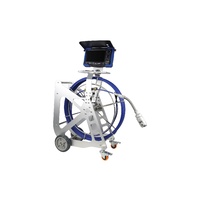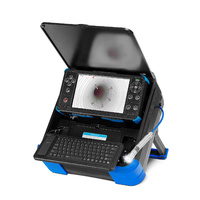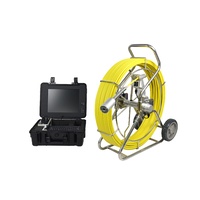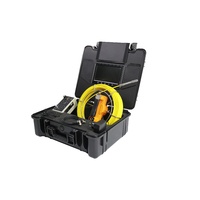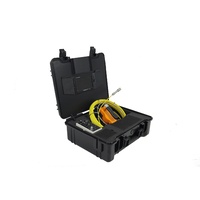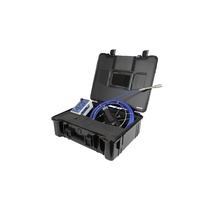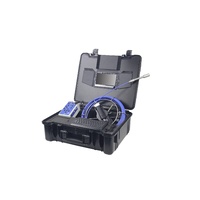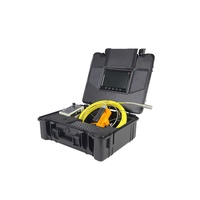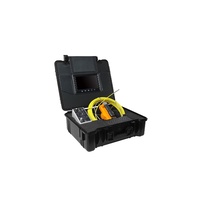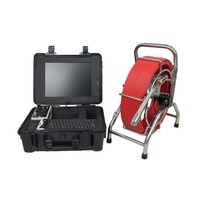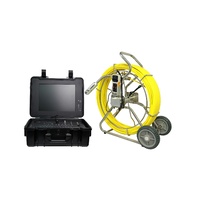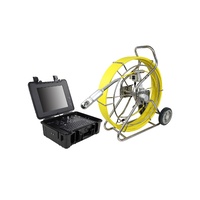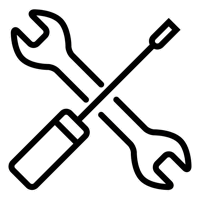Drain & Sewer Inspection Cameras
Sewer and drain cameras—also known as pipe inspection cameras or plumbers cameras—are essential tools for locating and diagnosing issues inside underground pipelines. At Testrix, we supply professional-grade push rod, pan & tilt, crawler and full HD drain cameras for plumbers, councils, and industrial users across Australia.
Why Use Sewer & Drain Inspection Cameras?
Inspection cameras provide clear visibility inside drains, sewers and stormwater pipes, helping professionals:
- Locate blockages, collapsed pipes, and root intrusion.
- Reduce excavation by accurately pinpointing problems.
- Provide video evidence for customers, councils, or insurance.
- Maintain large networks efficiently and safely.
Our Sewer & Drain Camera Range
- Full HD Drain Cameras – ultra-clear video for accurate inspections.
- Pan & Tilt Sewer Cameras – 360° viewing for large diameter pipes.
- Push Rod Drain Cameras – available in lengths from 30m to 140m.
- Self-Levelling Drain Cameras – keep the image upright automatically.
- Drain Cameras with Locators – pinpoint pipe positions from above ground.
- Stormwater Inspection Cameras – designed for council drainage networks.
- Commercial Sewer Cameras – systems for large facilities and infrastructure.
- Council & Infrastructure Sewer Cameras – heavy-duty units for municipal use.
- Residential Drain Cameras – compact cameras for domestic plumbing.
- Crawler Sewer Camera Systems – robotic units for inspecting long pipelines.
Why Choose Testrix?
We provide sewer and drain cameras with local Australian support, training, and advice. Our range is trusted by plumbers, councils, and contractors who require reliable performance in the field.
Explore our complete sewer & drain camera category to find the right system for your work.
FAQ's
Are sewer cameras worth it?
Yes, particularly if you are inspecting and diagnosing issues with drains, sewers, stormwater and other pipes, a sewer camera typically will pay for itself quite quickly. These devices allow you to look inside pipes without having to dig them up and not only offer cost effectiveness but also convenience. Many councils, plumbers and civil contractors to name a few invest in good quality sewer cameras which gives them the ability to quickly deploy into pipes and get to the cause of the problem easily and with minimum fuss and disruption. Flooding can occur as a result of blockages, or even pipe collapse which can be caused by many factors, such as tree roots, wear and tear or other forms of damage. A sewer camera allows you to isolate the problem and only repair the part that is needed without the need to dig out the pipe and cause additional expense and time.
When coupled with a precision locator, such as the Radiodetection RD7200, it now gives the ability to locate the position and depth of the camera head very accurately and pinpoint the problem area from above the ground. Testrix sewer cameras typically contain a locating beacon, called a sonde for fast and easy pinpointing of camera head position and depth, which gives an even faster payback on your investment in the equipment. We have a full range of sewer cameras, from entry level systems up to the Testrix Bluebird Full HD range for the ultimate in sewer and drain pipe inspections. The main thing to consider with a sewer camera is the upfront cost of the equipment, but if you are undertaking pipe inspections in sewers, drains, or stormwater systems on any sort of a regular basis, ownership of a sewer camera is more cost-effective than hiring. The main thing to be aware of is that it is important to prolong the life of the equipment by keeping it clean and well maintained.
What is the difference between a borescope and a sewer camera?
A borescope is a general inspection tool designed for looking inside tight spaces, such as machinery, walls and in areas which are difficult or impossible to gain access into. Typically, a borescope will be much smaller and cost less than a sewer camera and will have a smaller camera, very basic lighting as they are not designed for the larger environment found inside pipes which requires much more powerful lighting to be able to see faults. A sewer camera will have a much longer pushrod cable, which will also be stiffer and wound onto a reel to be able to traverse pipes over much longer distances, which in some cases will be well over 100 metres. The sewer camera will also usually have a waterproof camera head which a borescope will not necessarily have any level of waterproofing as they are not designed for the wet environments that sewer cameras need to work in. A sewer camera will also usually have a distance counter and have a far more rugged build quality than the borescope. Essentially, the borescope is designed for small tight spaces, and the sewer camera is designed for serious drain and sewer pipe inspections and diagnostics.
What is the best inspection camera for drains?
“Best” really depends on the profile of the work that you do and for which purpose you are using the drain inspection camera system. As a rule of thumb, residential plumbers will use a pipe inspection camera system with a 30-metre push rod cable and a smaller camera head, typically around 25-30mm in diameter with a built in locating sonde, such as the Testrix Bluebird Mini HD or the Testrix Bluebird Mini-PTH which has a unique feature in its 28mm diameter high definition pan and tilt camera head. Commercial plumbers may opt for the longer 60 metre systems such as the Testrix Bluebird MIDI-60HD or the Testrix Bluebird MIDI-80HD which offer longer and thicker pushrods and HD camera heads which can be either pan and tilt, or self-levelling with slightly more diameter and more powerful lighting for looking inside larger pipes than the 90mm to 100mm pipes that residential plumbers tend to work with. These slightly larger inspection camera systems are suited for larger pipes up to 400mm in diameter and finally for the larger stormwater and sewer pipes of up to 1200mm in diameter, then the Testrix Bluebird 60-HD, or the Testrix Bluebird 120-HD offer the ultimate in drain and sewer pipe inspection camera systems with much larger pan and tilt, or self-levelling camera heads that have far more powerful lighting to illuminate the inside of much larger pipes. Coupled with HD and Full HD camera heads, this gives the operator an optimal view of even small levels of damage or minor problems inside the pipe before they become a bigger issue. In a nutshell, there is no “best” inspection camera, which is why Testrix Systems provides a whole range for various applications.



